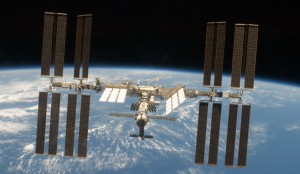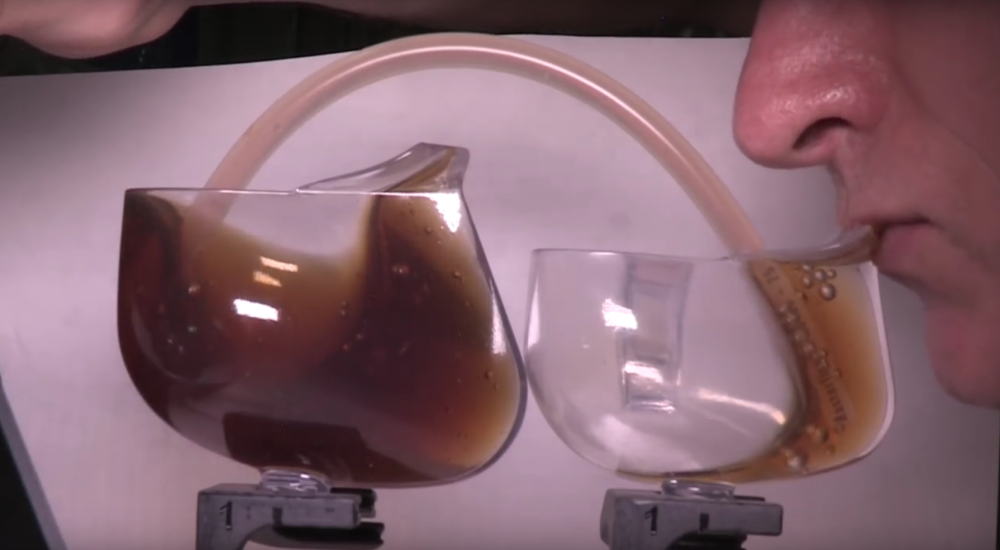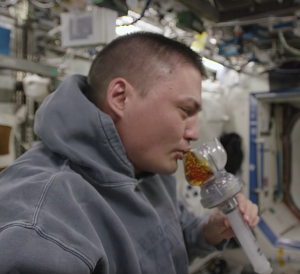Coffee is one of the most popular beverages in the world and enjoyed in virtually every country on the planet. Just in the United States more than 80% of adults drink at least one cup a day, while the national average is three cups a day. I am not what most people would consider a coffee addict, as I tend to drink only about one cup of coffee a day, although there are some days where I may get crazy and drink two. But I still think, like most regular coffee drinkers, that I’d find it very hard to stop drinking it for extended periods of time. Conceivably I could go maybe a day or two without fresh coffee, but even as a moderate user the idea of a prolonged period of time without it makes me start to twitch.
So I can’t begin to imagine what it would be like for someone living on the International Space Station, who often go months with only instant coffee to drink. It makes sense that fresh coffee is probably not a good idea in a weightless environment. Liquids in space act unpredictably and will fly around in every direction imaginable if they’re not properly contained. Regular, uncontrolled liquids on their own are already risky because there are very real safety concerns with water coming into contact with sensitive equipment, but just imagine if the flying orbs of liquid were piping hot coffee. It’s hard enough to move around with no gravity, much less while dodging hot balls of boiling hot java.
But astronaut Kjell Lindgren really misses a good cup of coffee while he’s in orbit, so he was thrilled when he got the opportunity to have freshly brewed coffee on the ISS. By making slight adjustments to a 3D printed espresso cup that was created by a mechanical engineering graduate student and his professor at Portland State University, Lindgren got his fresh cup of coffee all while contributing to a research project. Drew Wollman and his professor Mark Weislogel developed a capillary beverage cup to study the way that liquids behave in zero gravity environments. Thier uniquely-shaped cup was able to brew coffee with an easily modified attachment that holds a coffee pod, similar to a K-cup, while hot water is pumped through it with a syringe.
One of the many ongoing research projects going on aboard the International Space Station is the study of liquid management. It isn’t just about water either; the station uses liquid fuels, coolants and of course beverages, and all of them bring unique challenges when working with them. By studying the behavior or liquids in space, researchers could design technology that makes the management of those liquids simpler and less time consuming. As with the 3D printed cup designed by Wollman, creating tools and containers with unique geometries could revolutionize the way that liquids are handled in zero gravity conditions.
While the coffee brewing modification was clearly the result of a caffeine-starved astronaut, the cup itself is the real innovation and the reason that the modifications that were made by Lindgren actually worked. The unique geometry and odd shape of the 3D printed coffee cup creates a capillary pressure gradient that forces the liquid to move up and towards the face of the person drinking from it, while the liquid’s natural surface tension will hold it inside of the cup. The liquid is driven right into the lips of the astronaut where it can either be slowly sipped, or consumed in a single large gulp. The design of the 3D printed cup is so precise that even without a lid, any liquid in it will stay put until the astronaut takes a drink. So not only can Lindgren now have a daily cup of freshly brewed caffeine juice, but he doesn’t have to worry about the hot liquid scattering around the station and burning everyone in sight.
You can see video astronaut Kjell Lindgren using the 3D printed cup to brew his coffee here:
This new and innovative way to drink liquids, and brew coffee, isn’t just a curiosity either. Not only can the principals of the 3D printed cup design be applied to other liquid management technologies, but it has a practical purpose as well. Because the cup is completely reusable and easy to clean, it will help reduce waste and conserve onboard resources. But who are we kidding — as a coffee drinker, for Lindgren the only thing that really matters about this experiment is finally getting a fresh cup of joe. Discuss this great new innovation in the 3D Printed Cup Brews Coffee forum over at 3DPB.com.
[Source: PSFK]Subscribe to Our Email Newsletter
Stay up-to-date on all the latest news from the 3D printing industry and receive information and offers from third party vendors.
Print Services
Upload your 3D Models and get them printed quickly and efficiently.
You May Also Like
Havaianas Collaborates with Zellerfeld to Launch 3D Printed Flip-Flops
The shoe of the summer is undoubtedly the flip-flop. Easy on, easy off, your feet won’t get sweaty because there’s not much material, and they’re available in a veritable rainbow...
UCLA Researchers Develop 3D Printed Pen that May Help Detect Parkinson’s Disease
Diagnosing Parkinson’s disease is difficult. Often, early symptoms of the progressive neurological condition may be overlooked, or mistaken for signs of aging. Early diagnosis can help save lives and improve...
Printing Money Episode 30: Q1 2025 Public 3D Printing Earnings Review with Troy Jensen, Cantor Fitzgerald
Printing Money is back with Episode 30, and it’s that quarterly time, so we are happy and thankful to welcome back Troy Jensen (Managing Director, Cantor Fitzgerald) to review the...
Heating Up: 3D Systems’ Scott Green Discusses 3D Printing’s Potential in the Data Center Industry
The relentless rise of NVIDIA, the steadily increasing pledges of major private and public investments in national infrastructure projects around the world, and the general cultural obsession with AI have...




































